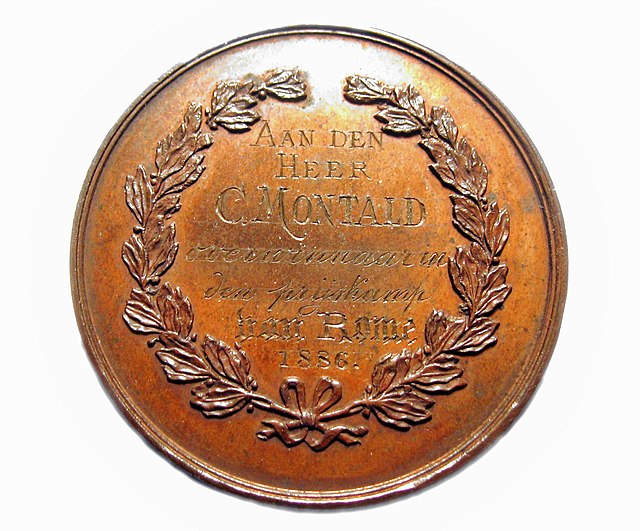Loading AI tools
Belgian award for young artists From Wikipedia, the free encyclopedia
The Belgian Prix de Rome (Dutch: Prijs van Rome) is an award for young artists, created in 1832, following the example of the original French Prix de Rome. The Royal Academy of Fine Arts Antwerp organised the prize until 1920, when the national government took over. The first prize is also sometimes called the Grand Prix de Rome. There were distinct categories for painting, sculpture, architecture and music. [citation needed]

The Prix de Rome was a scholarship for arts students. It was created in 1663 in France under the reign of Louis XIV. It was an annual burse for promising artists (painters, sculptors, and architects) who proved their talents by completing a very difficult elimination contest. The prize, organised by the Royal Academy of Painting and Sculpture (Académie royale de peinture et de sculpture), was open to their students. The award winner would win a stay at the Palazzo Mancini in Rome at the expense of the King of France. The stay could be extended if the director of the institution deemed it desirable.
Expanded after 140 years into five categories, the contest started in 1663 as three categories – painting, sculpting, and architecture; in 1803, music was added; in 1804, engraving was added. The winner of the "First Grand Prize" (called the agréé)[1] would be sent to The Academy of France in Rome founded by Jean-Baptiste Colbert in 1666. In 1807, Louis Napoleon created the Dutch version of the Prix de Rome. After the creation of Belgium as an independent state in 1830, the Belgian government started their own version of the Prix de Rome in 1832. [citation needed]
|
|
Seamless Wikipedia browsing. On steroids.
Every time you click a link to Wikipedia, Wiktionary or Wikiquote in your browser's search results, it will show the modern Wikiwand interface.
Wikiwand extension is a five stars, simple, with minimum permission required to keep your browsing private, safe and transparent.